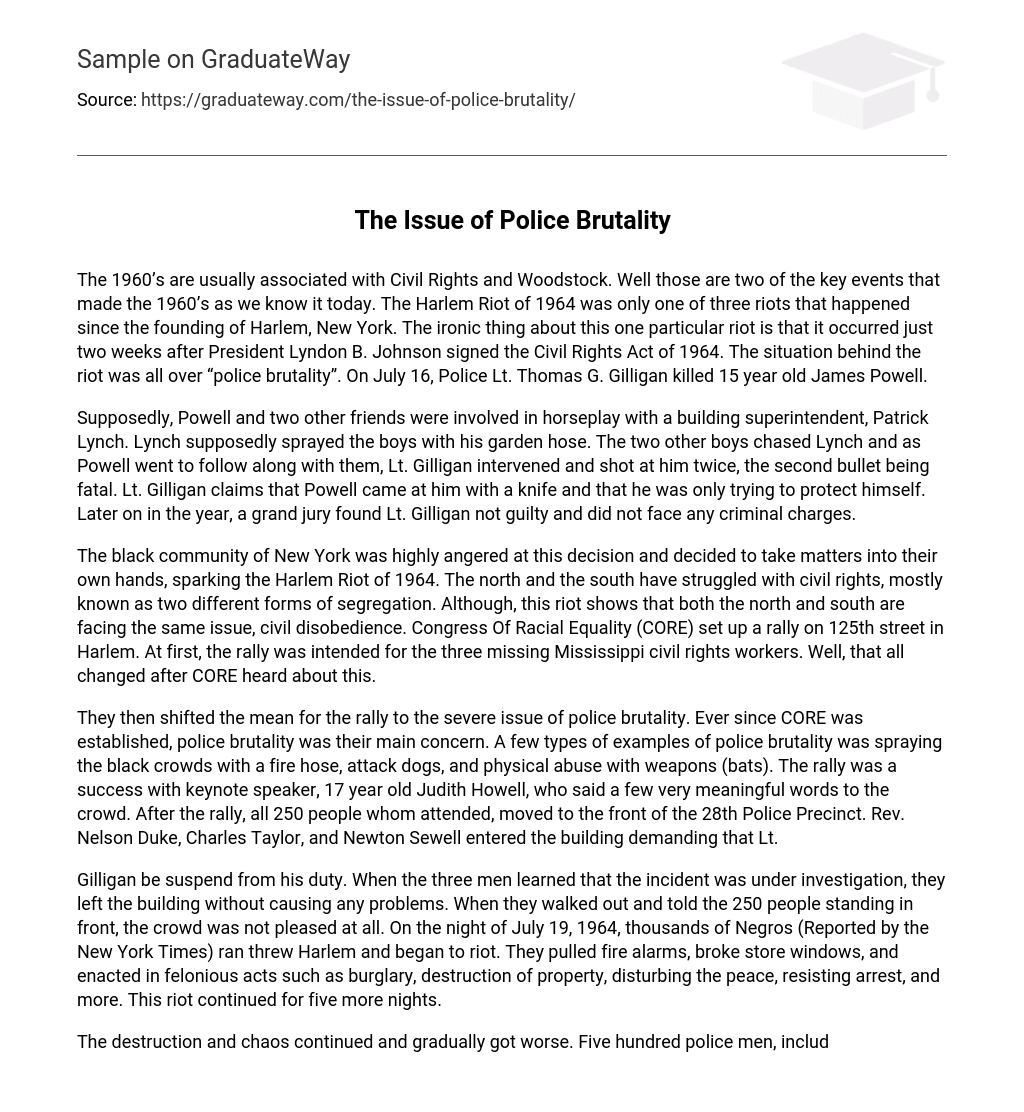Although the 1960’s are commonly associated with two major events, Civil Rights and Woodstock, which had a significant impact on the decade, it is important to note that the Harlem Riot of 1964 was just one of three riots to occur in Harlem, New York throughout its history. Interestingly enough, this particular riot took place only two weeks after President Lyndon B. Johnson signed the Civil Rights Act of 1964 into law. The catalyst for the riot was an issue of “police brutality”, ignited by Police Lt. Thomas G. Gilligan’s fatal shooting of James Powell, a 15-year-old boy, on July 16.
According to reports, Powell was engaging in playful antics with the building superintendent Patrick Lynch, along with two friends. It is alleged that Lynch sprayed water at the boys using his garden hose. As Lynch was chased by the other boys, Powell also joined in on the pursuit. Unfortunately, Lt. Gilligan intervened and shot Powell twice, resulting in his tragic death. Lt. Gilligan claims that he acted in self-defense as Powell approached him with a knife. As a result, a grand jury found no evidence of misconduct against Lt. Gilligan and no criminal charges were filed against him.
The Harlem Riot of 1964 was sparked by a decision that angered the black community in New York. This event highlights how both the north and south have dealt with civil rights issues, which are often linked to different forms of segregation. Despite these differences, the riot reveals that both regions are facing a shared problem: civil disobedience. The Congress Of Racial Equality (CORE) had originally planned a rally on Harlem’s 125th street to show support for three missing Mississippi civil rights workers. However, after learning about the situation, CORE changed their plans.
They then changed the focus of the rally to address the serious issue of police brutality, which had been a main concern for CORE since its establishment. Various examples of police brutality included spraying black crowds with a fire hose, using attack dogs, and physically abusing them with weapons such as bats. The rally was successful and featured a powerful speech from 17-year-old Judith Howell. After the rally, all 250 attendees marched to the front of the 28th Police Precinct. Rev. Nelson Duke, Charles Taylor, and Newton Sewell led the group into the building, demanding to speak with Lt.
Gilligan was suspended from his duty. Upon learning that the incident was under investigation, the three men left the building without causing any problems. When they informed the 250 people standing in front, the crowd was displeased. On the night of July 19, 1964, thousands of Negros (Reported by the New York Times) ran through Harlem and initiated a riot. They pulled fire alarms, shattered store windows, and engaged in criminal activities including theft, property damage, disturbance of peace, resisting arrest, etc. This riot persisted for five additional nights.
The destruction and chaos escalated further, with 500 police officers, including tactical forces, forming human barricades by cordoning off 125th street between 3rd and 8th avenue. Interestingly, the riots exclusively occurred at night, adding an ironic twist. Despite the police’s efforts, the riots continued unabatedly, necessitating additional law enforcement personnel. Eventually, residents in the area were viewed as suspects regardless of their stance against the riots. Finally, on July 24th, 1964, the riots ultimately diminished and concluded.
During this riot, one person was killed, 118 were injured, and 465 men, women, and children were arrested. The era of Civil Rights was defined by a significant problem of police brutality. Black individuals suffered mistreatment from white police officers without consequences, which was extremely abhorrent. We sincerely hope that such incidents never happen again. Riots acted as a way for black America to demonstrate their unwavering determination in achieving their goals. Their aspirations went beyond monetary gain or material possessions; what they truly sought was the realization of freedom and equality.





